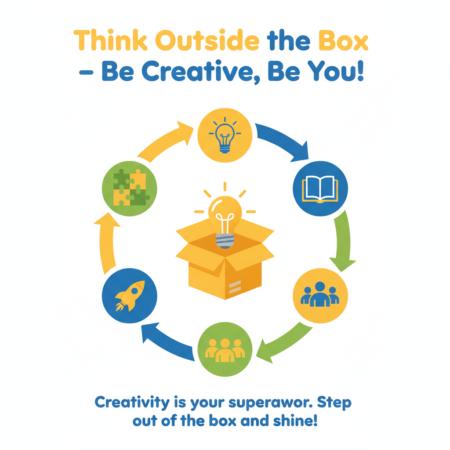Introduction
Life is full of challenges, but it’s how we respond to them that truly defines us. Resilience is the key to overcoming setbacks and bouncing back stronger than ever. In this blog post, we’ll explore the inspiring stories of resilient individuals who have turned their setbacks into comebacks. Join us as we discover valuable lessons and strategies to navigate life’s challenges with courage and resilience.
Understanding Resilience
Resilience is our ability to bounce back when life throws challenges our way. It’s about staying strong and positive, even in tough times.
Resilient people can adapt to change, manage their emotions, and keep moving forward, no matter what. Take Oprah Winfrey, for instance. Despite facing poverty and abuse, she persevered and became one of the most successful women in the world.
Similarly, J.K. Rowling didn’t let rejection stop her from writing the Harry Potter series. Resilience isn’t just about bouncing back; it’s about using setbacks as fuel for growth and never giving up hope.
The Power of Mindset
- Understanding Mindset:
- Our mindset profoundly influences how we interpret setbacks and confront challenges in our lives.
- Two primary mindsets shape our outlook: the growth mindset and the fixed mindset.
- Growth vs. Fixed Mindset:
- A fixed mindset rigidly adheres to the notion that abilities are innate and immutable.
- In contrast, a growth mindset fosters the belief that abilities can be cultivated through perseverance and dedication.
- Embracing Challenges:
- Individuals embracing a growth mindset perceive challenges as avenues for personal development and enrichment.
- They regard setbacks as transient hurdles rather than insurmountable roadblocks.
- Turning Setbacks into Comebacks:
- The adoption of a growth mindset empowers individuals to rebound from setbacks with resilience and fortitude.
- Rather than succumbing to discouragement in the face of failure, they leverage it as a catalyst for learning and advancement.
- Example: Michael Jordan:
- Despite encountering numerous setbacks in his illustrious career, Michael Jordan tenaciously persevered.
- Each setback served as fuel for his relentless pursuit of excellence, propelling him to unprecedented success in the realm of basketball.
- Cultivating Resilience:
- Through the cultivation of a growth mindset, individuals foster resilience, transforming setbacks into opportunities for growth and triumph.
- It entails maintaining optimism, nurturing a belief in one’s capacity to surmount obstacles, and perpetually striving for self-improvement.
Building Resilience Skills
Resilience Essentials:
Resilience is crucial for bouncing back from setbacks and emerging stronger. It’s about understanding emotions and reactions while managing them effectively.
Developing Self-Awareness and Emotional Regulation:
Cultivate self-awareness by understanding thoughts and emotions. Practice mindfulness for composure. Manage emotions healthily and avoid impulsive reactions.
Enhancing Problem-Solving and Coping Skills:
Break challenges into manageable tasks. Seek support for solutions. Use coping mechanisms like exercise and journaling to maintain positivity.
Embracing Growth Opportunities:
View setbacks as chances for growth. Adopt a growth mindset. Stay adaptable and adjust strategies to overcome obstacles.
Inspiration from Maya Angelou:
Maya Angelou, the acclaimed poet and author, encountered numerous setbacks and adversities throughout her life journey. However, she embraced resilience, using her experiences to inspire others through her profound writing and passionate advocacy.
Learning from Resilient Individuals
- Drawing Inspiration:
- Introduce individuals who triumphed over adversity as sources of inspiration.
- Their stories offer hope and motivation for readers facing their own challenges.
- Analyzing Resilience Strategies:
- Examine the strategies and mindsets employed by these individuals.
- Explore traits such as perseverance and resourcefulness that contributed to their resilience.
- Extracting Valuable Lessons:
- Identify actionable insights and practical tips derived from these stories.
- Readers can apply these lessons to their own lives when confronted with setbacks.
- Empowering Readers:
- By showcasing real-life examples of resilience, readers gain confidence in overcoming obstacles.
- These stories demonstrate the transformative power of resilience and provide guidance for turning setbacks into opportunities for growth.
Resilience in Different Contexts
Academics:
- Delve into the challenges students encounter in their academic journey, such as exams, coursework, and peer pressure.
- Highlight how resilience helps students bounce back from setbacks like failure or academic stress.
- Offer strategies for developing resilience in academic settings, such as seeking help when needed, maintaining a positive attitude, and setting realistic goals.
Career:
- Explore the setbacks and obstacles individuals may face in their career paths, such as job loss, rejection, or workplace conflicts.
- Discuss how resilience enables individuals to adapt to changes, persevere through challenges, and seize opportunities for growth.
- Provide tips for building resilience in the workplace, including seeking feedback, cultivating a growth mindset, and nurturing a supportive network.
Relationships:
- Examine the complexities of interpersonal relationships and the conflicts that may arise in friendships, family dynamics, or romantic partnerships.
- Illustrate how resilience fosters empathy, communication, and conflict resolution skills, essential for maintaining healthy relationships.
- Suggest strategies for building resilience in relationships, such as active listening, setting boundaries, and practicing forgiveness.
Health:
- Address the setbacks and health challenges individuals may encounter, including illness, injury, or mental health issues.
- Discuss how resilience plays a crucial role in coping with health-related setbacks, managing stress, and maintaining overall well-being.
- Offer practical tips for enhancing resilience in the realm of health, such as prioritizing self-care, seeking support from healthcare professionals, and practicing resilience-building activities like mindfulness and exercise.
Overcoming Common Obstacles
- Self-Doubt:
- Acknowledge the feelings of self-doubt that may arise when facing setbacks or challenges.
- Encourage readers to challenge negative thoughts and beliefs by focusing on their strengths and past successes.
- Offer strategies for boosting self-confidence, such as positive self-talk, visualization, and setting achievable goals.
- Fear of Failure:
- Address the fear of failure as a common barrier to resilience.
- Remind readers that setbacks and failures are natural parts of life’s journey and opportunities for growth.
- Provide tips for reframing failure as a learning experience, embracing mistakes, and celebrating progress rather than perfection.
- Perfectionism:
- Discuss the pitfalls of perfectionism, such as unrealistic expectations and fear of making mistakes.
- Encourage readers to strive for progress over perfection and to embrace the learning process.
- Offer strategies for overcoming perfectionism, such as setting realistic goals, practicing self-compassion, and seeking support from others.
- Lack of Support:
- Recognize the importance of having a support system in building resilience.
- Provide guidance on seeking support from friends, family, mentors, or support groups during challenging times.
- Encourage readers to cultivate strong connections and to reach out for help when needed, knowing they are not alone in their journey.
Conclusion
In conclusion, resilient individuals teach us valuable lessons: setbacks can fuel growth. Resilience isn’t about avoiding adversity, but facing it with courage. Let’s embrace challenges as opportunities for growth and emerge stronger.







